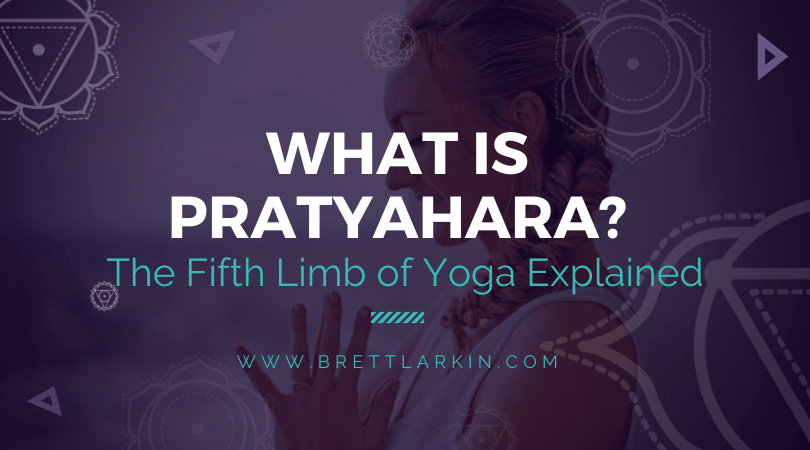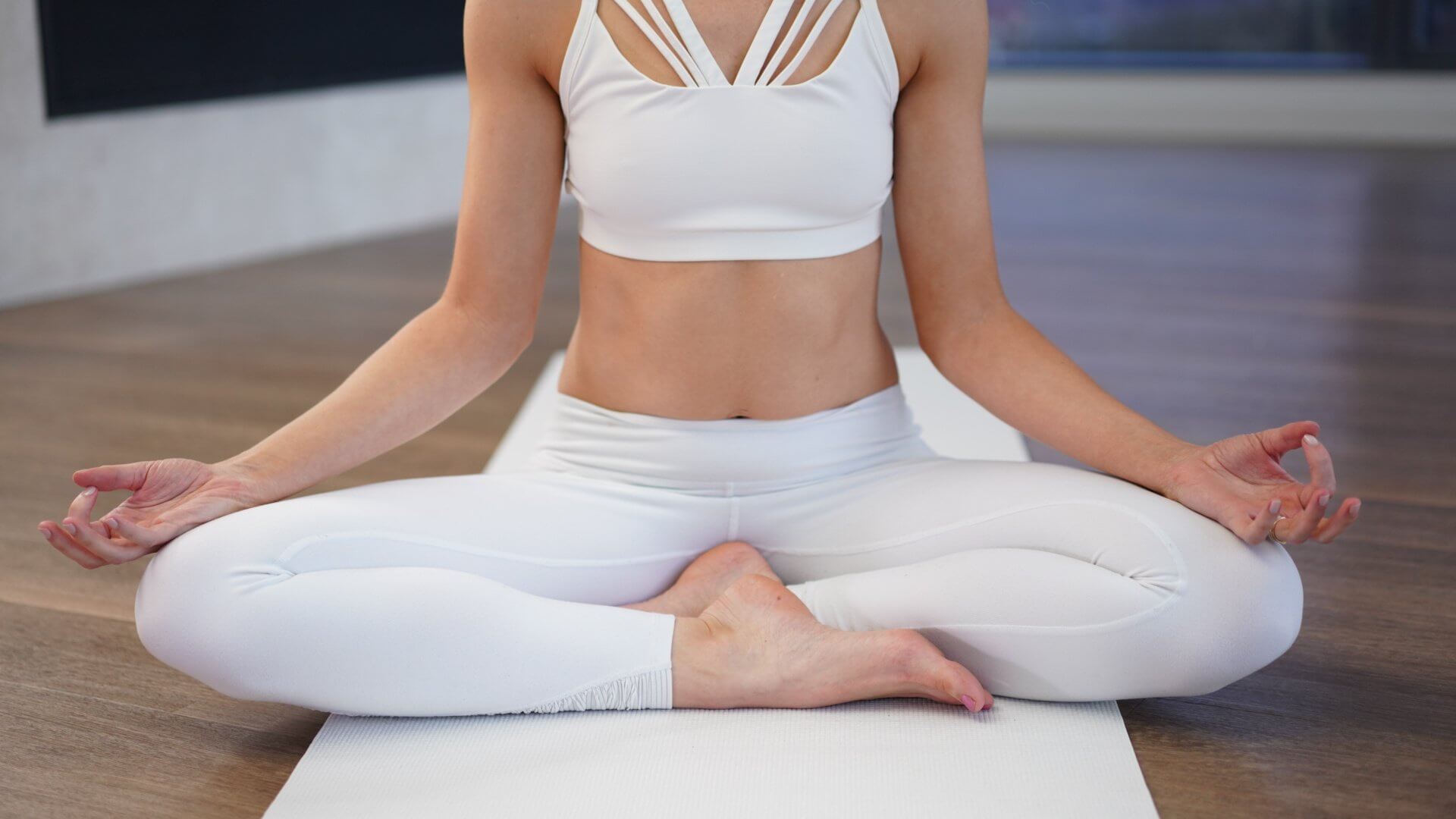
As you dive deeper into your yogic practice, you’re naturally going to work your way through the eight limbs of yoga, as outlined by Patanjali. Following on from the Yamas and Niyamas (the do’s and don’ts of yogic philosophy), asana (postures) and pranayama (breathing techniques), pratyahara is the fifth limb of yoga.
It is arguably a little more complex in its meaning and therefore often harder to apply to day-to-day living. Pratyahara is an intentional practice rather than something you can just drop into your everyday yoga practice.
Let’s delve deeper into this practice of sense withdrawal and see how to make it more accessible…

What is Pratyahara?
Translated literally, Pratyahara means ‘withdrawal of the senses’. To take that a step further, it means ‘the conscious withdrawal of energy from the senses’.
The idea of this practice is to guide the mind away from external influences or environmental factors that are ever-present when trying to take out focus within. It is a practice that sets an intention to experience our ‘true inner self’ by allowing the mind to absorb our senses rather than engage with them.
Many lecturers and spiritual leaders have compared this withdrawal of the senses to a turtle in a shell.

In this analogy, the head of the turtle represents the senses and the shell represents the mind. By withdrawing from the senses, the mind is able to take over and focus on moving the attention to our inner world rather than what is happening in our outer world. Like our own little shell or safe space.
Basically, Pratyahara is an essential precursor to any meditation practice. It’s a practice that is extremely important when progressing to focus, meditation and the ultimate goal of Samadhi (union with the divine). It’s the bridge between the first 4 limbs of yoga and the last essential 3.
Look at it like the bridge between your physical practice and your spiritual practice.
And hey, this isn’t an easy thing. It can take many years to build up an effective practice of Pratyahara, or any form of meditation for that matter, but it is a step towards achieving peace and one we should really be paying attention to.
How do I practice Pratyahara?
To look into this a little deeper, we can incorporate Pratyahara into our existing asana practice.
Take corpse pose (savasana) as an example. When you’re lying on your mat at the end of practice, consider it an observation exercise of sorts. Closing the eyes, start to tune into every sensation happening in the body. Do a scan of the body to find any gripping or holding, any tension, any areas of discomfort or pain. Notice each little thing that is happening in your inner world.
See if you can guide your attention away from things happening around you and then from there start focusing on your breath.
Bring your attention to your breath to use it as a constant metronome within the body rather than allowing the mind to drift to any external stimuli.
By doing this, we can gradually start to zone out from the things around us and draw our attention inward. A great place to start with this is yoga nidra, which is a practice of withdrawing all senses other than sound. In yoga nidra you listen to an instructor who will guide you through a meditation to focus your mind.
Other quickfire ways to practice Pratyahara are:
- Observe silence. This can either be at a retreat or at home for a day or for a set period of time every day. You can incorporate it into your meditation practice, holding a simple hand mudra while you go inward.
- Practice mindfulness. Adopt a regular practice of observing the body and the senses. As you move about your daily life, pay attention to each sensation that you experience. Notice how external influences contribute to your mood, your body, or your perception of an external object. This can be while doing something as simple as brushing your teeth!
- Refrain from participating in idle gossip or any negative remarks. Bring awareness to how you participate in the outer world, retreating to your inner world when you notice that you’re participating in something that doesn’t contribute to your inner peace. This allows us to become aware of and begin to control our desires.
- Practice periods of celibacy or fasting as a way to challenge our sensory needs. When you choose to engage in pleasurable activities, do so mindfully and without the distraction of the external world.
Final Thoughts
We are so lucky these days that there are so many resources out there to help guide us through our yoga practice. This is especially true for the fifth limb of the eight limbs of yoga.
My best advice? Try a few techniques of sense withdrawal and find what works for you.
Whether this be finding a comfortable safe space within your house, blocking out external stimuli and experimenting with how you feel, or downloading an app that will help you block out sensory input… anything goes.
I think we worry as yogis about doing things absolutely by the book. In truth, though, there is no right or wrong. To get to our end goal and progress on our path of spiritual healing and enlightenment, we must make our own way there however works for us.
Next Steps
- If you’re interested in practical kriya yoga as a way to improve your daily life and relationships, check out my Yoga for Self Mastery course.
- Order my Yoga Life book for a practical guide to creating balance in your life through yoga.
- Check out my YouTube channel and find some yoga classes that you can try out for yourself!
Experience 3 Training Videos from Inside My 200-Hour Online YTT

YOU MIGHT ALSO LIKE
- What is Kriya Yoga? The Philosophy and Practice
- Uddiyana Bandha: Tapping Into Your Deep Core
- 4 Reasons Hasta Bandha Is Essential To Your Yoga Practice
- Vitarka Mudra: What It Is and How Do You Use It?
- Shakti Mudra: What It Is and How Do You Do It?
- Garuda Mudra: What It Is and How Do You Use It?
- Kali Mudra: What It Is and How Do You Do It?
- Shunya Mudra: What It Is and How Do You Do It?
- Varuna Mudra: What It Is and How Do You Use It?
- Vayu Mudra: What It Is and How Do You Use It?
- Samana Vayu: The Energy of Balance & How to Access It
- Apana Vayu: The Energy of Release & Surrender
- Udana Vayu: The Ascending Wind
- Prana Vayu: The Breath of Vitality
- Vyana Vayu: The Energetic Secret to Flow
Learn how to do 11 of the most popular yoga poses correctly. Free video + PDF download.











